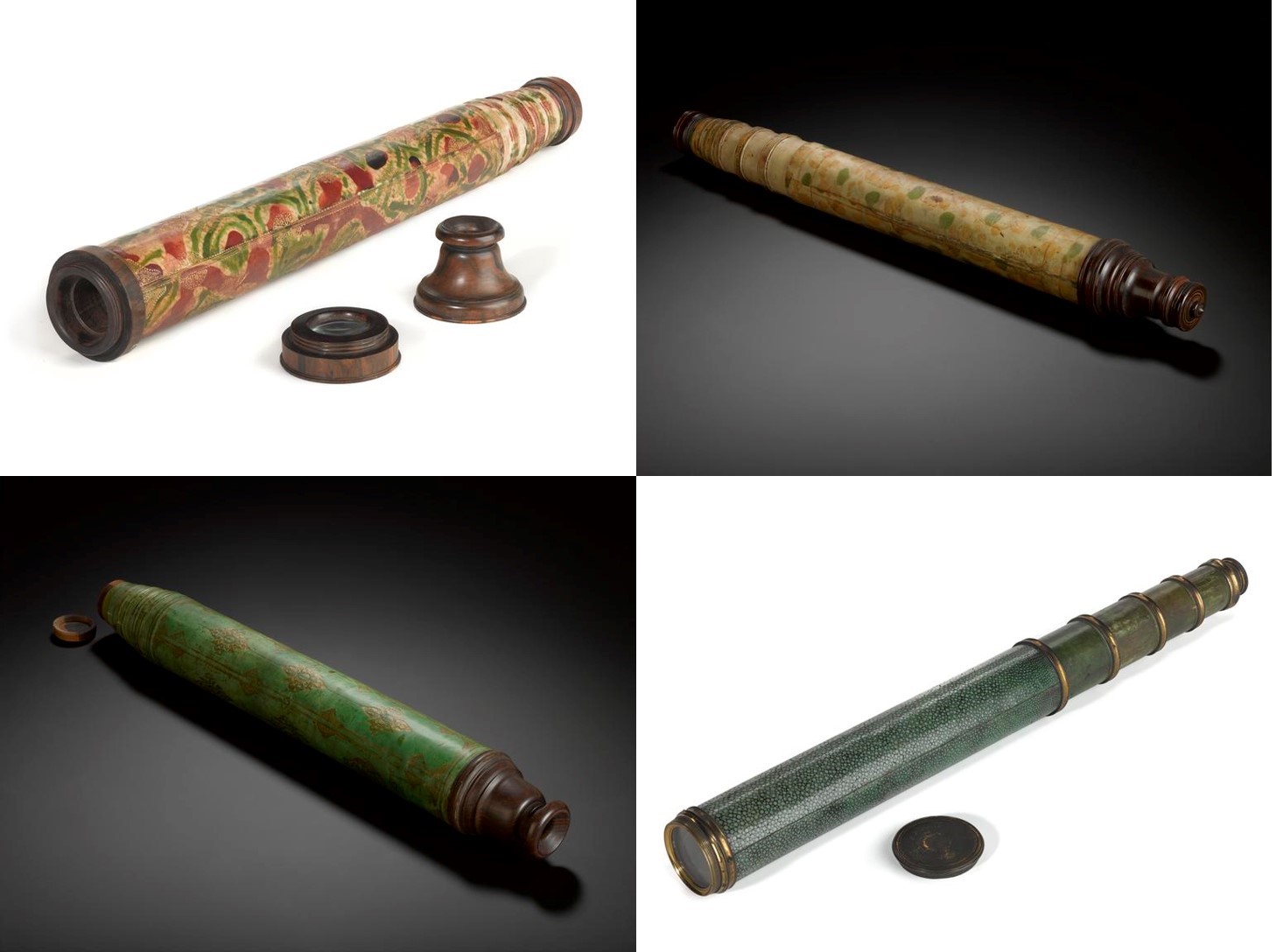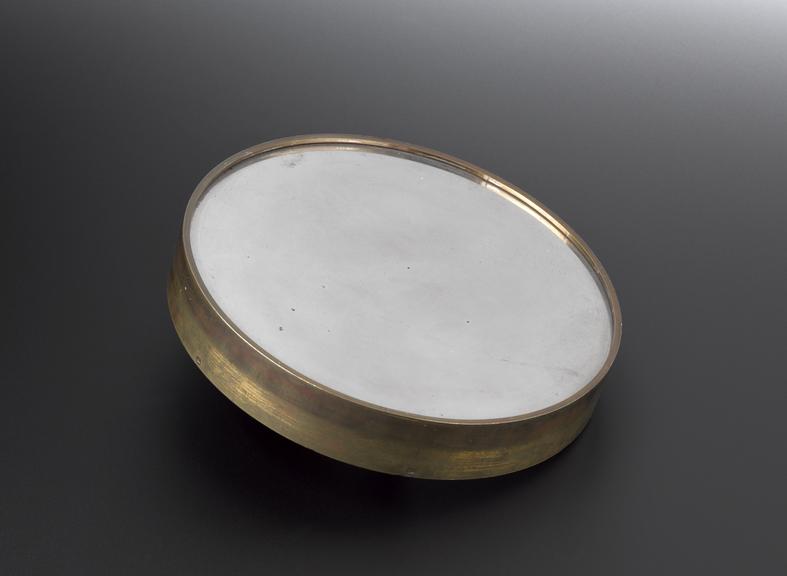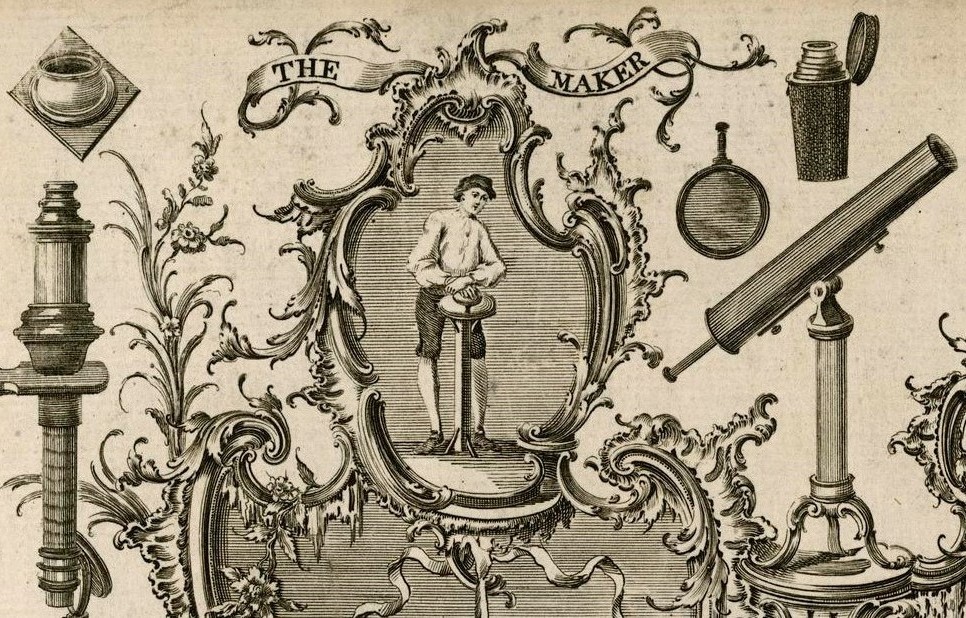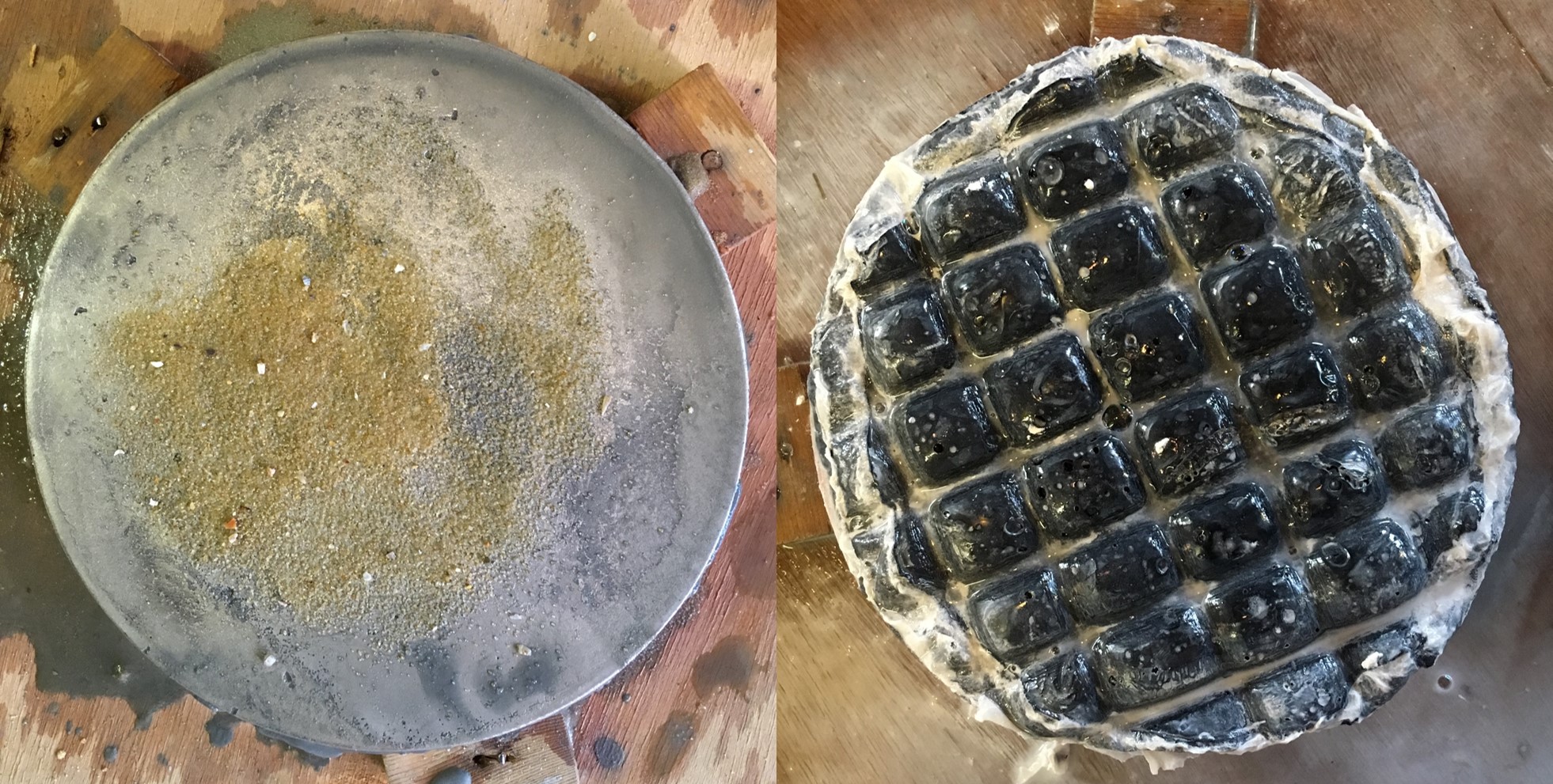We have some particularly fine telescopes from the 17th and 18th centuries in our recently opened permanent gallery, Science City 1550-1800: The Linbury Gallery.

As well as some beautiful refracting telescopes in this gallery, we currently have one of the very earliest reflecting telescopes on display, generously lent by the Royal Society. It was made in the early 1670s by none other than Sir Isaac Newton and used mirrors to gather light, rather than lenses as found in refracting telescopes. In fact, Newton is often credited with inventing the reflecting telescope – but it’s worth remembering that contemporaries like James Gregory were experimenting with similar designs at this time.
Newton’s reflecting telescope mirrors were made from an alloy called speculum metal. Essentially a type of bronze, speculum metal has an unusually high tin content – typically about 30% – to give mirrors a suitably silvery, reflective surface.
It was a notoriously difficult material for astronomers to work with, being both brittle and prone to tarnishing quickly. But despite the inconvenience of having to frequently remove and repolish the mirrors, speculum metal remained the material of choice for reflecting telescopes well into the 19th century in the absence of suitable alternatives.

Astronomers experimented with different recipes for speculum metal over the centuries, but the two main ingredients were copper and tin. Newton added small amounts of arsenic to his, arguing that it made the metal whiter and more reflective. He did at least take some basic precautionary measures when melting this poisonous substance to make his alloy, ‘bewaring in the mean time, not to draw in breath near the pernicious fumes’ (Philosophical Transactions of the Royal Society, vol. 7 (1672)).
We had a go at making speculum metal telescope mirrors – arsenic NOT included – as part of a “how-it’s-made” film for the Science City gallery. We wanted to showcase some of the extraordinary craft skills needed to produce many of the historical scientific instruments in our collection.
Making a historically sympathetic telescope mirror involves two key processes: first, the metal is cast in the shape of a disc; then, the surface of the disc is ground and polished to a smooth, accurate mirror finish. Speculum metal is now virtually obsolete as a material, but thanks to the virtuoso skills and tireless efforts of some truly talented contemporary artists, we were able to meet this somewhat unpredictable challenge head-on.

Artists Necole Schmitz, Stephen Coles and Katie Surridge took on the casting processes, melting the specially alloyed speculum metal in a chimney furnace at over 1000 degrees Celsius before pouring it into disc-shaped moulds.
Speculum metal might look light and fluid when it’s molten, but it’s actually very heavy: our resulting mirror disc – a modest 6 inches in diameter – weighed about 4kg! Still, that’s peanuts compared to the 6-foot speculum metal mirror from the Great Rosse Telescope in our collection, which weighs in at over 4 tonnes…

Our mirror was cast with an almost imperceptibly shallow concave face – only about a millimetre deep in the centre. But that gentle curve is vital; millions of wavelengths of light hitting the mirror from myriad angles are then all reflected back to converge perfectly at a single point, producing a focused, blur-free image.
The mirror disc’s concave surface then had to be ground against another metal disc with an equally matching convex surface. This grinds out imperfections from the casting process to make the mirror smoother and more reflective and helps to grind a more accurate curve into the mirror.
Artist Terry Kubecki Pearce, an expert in hand-grinding telescope mirrors, was the man for the job. Nowadays telescope mirrors are made from glass which is ground into shape before receiving a reflective coating, but the hand-grinding techniques are similar to those that would have been used for speculum metal mirrors. In fact, metal mirror grinding itself developed out of the materials, tools and techniques used for grinding spectacle lenses and other forms of glass.

Terry ground the mirror against the convex disc using ever finer pastes of water mixed with sand, from coarse, gritty grades right down to ground pumice stone as smooth as flour. He then polished it to a high shine on a bed of slightly softened set pitch, or tar, with polishing powder. This is exactly what earlier astronomers did: William Herschel ground his speculum metal mirrors with coarse emery and water; Newton polished his on a bed of pitch while John Hadley similarly used pitch-soaked silk.

It may sound straightforward enough, but grinding and polishing a speculum metal mirror is not for the faint-hearted. Caroline Herschel, sister of William and herself an accomplished astronomer who went on to discover eight comets, wrote of her ‘attendance on my Brother when polishing, that by way of keeping him alife I was even obliged to feed him by putting the Vitals by bits into his mouth – this was once the case when at the finishing of a 7 foot mirror, he had not left his hands from it for 16 hours together’ (Michael Hoskin (ed.), Caroline Herschel’s Autobiographies (Cambridge, 2003) p. 55).
It took Terry over 20 hours of grinding and polishing to produce our mirror – and no, thankfully, he didn’t do it non-stop!

Our speculum metal mirror is about the same size as that for the reflecting telescope with which William Herschel discovered the planet Uranus in 1781 – the first planet to be discovered with a telescope. We have a similar reflecting telescope made by Herschel on display in the Science City gallery, as well as the mirror which we had specially made.
Whilst our museum is temporarily closed we encourage you to explore Science City through the accompanying blog series, our online collection and the ‘Shaping Science’ series on our YouTube channel.
